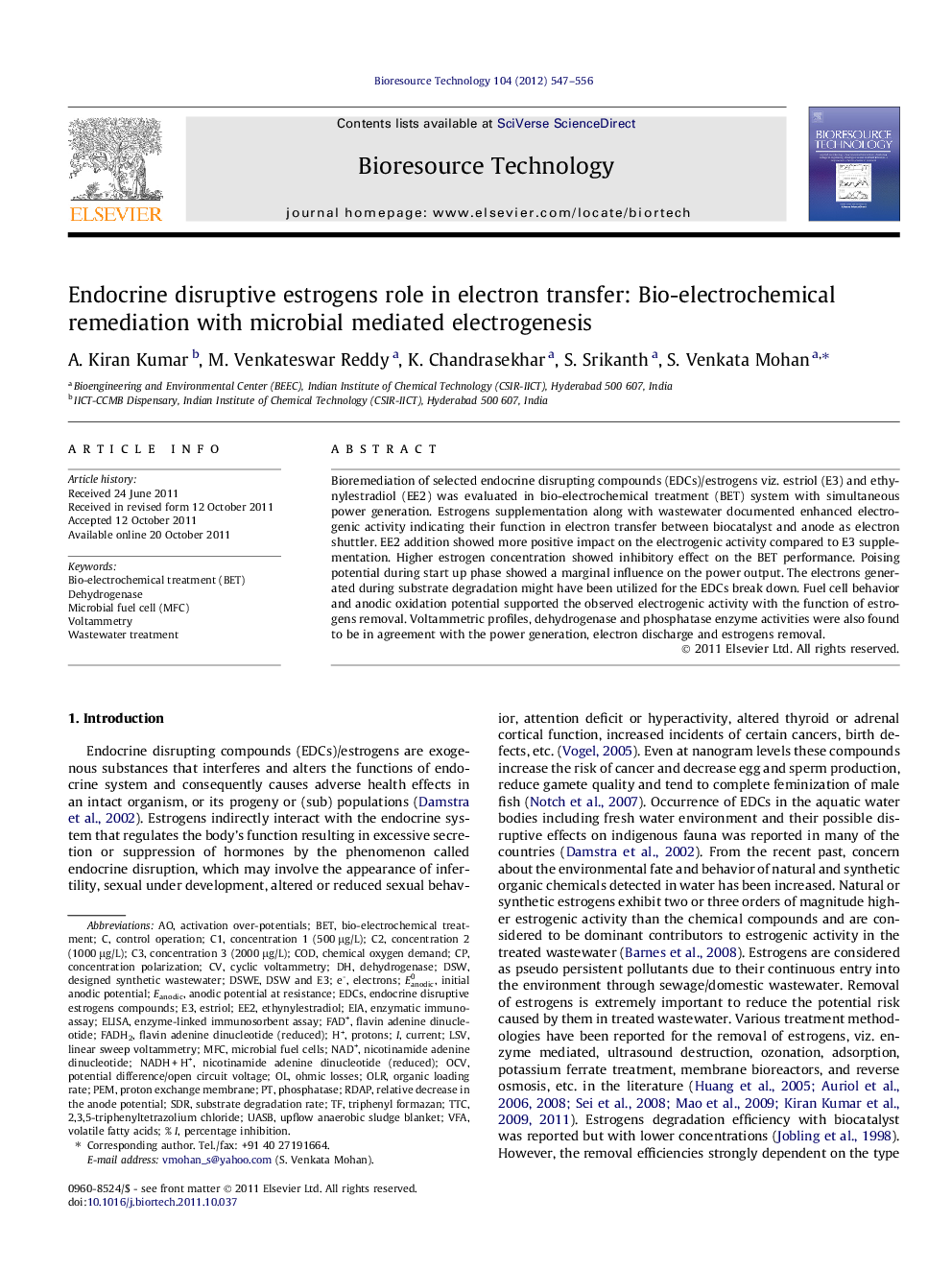| Article ID | Journal | Published Year | Pages | File Type |
|---|---|---|---|---|
| 7088487 | Bioresource Technology | 2012 | 10 Pages |
Abstract
⺠Estrogens removal through a combination of biochemical and electrochemical activity. ⺠Estrogens functioned as electron shuttler between biocatalyst and anode. ⺠Natural estrogen (E3) removal is higher than synthetic estrogen (EE2). ⺠Increasing estrogen concentration has toxic influence on the biocatalyst function. ⺠Estrogens helped in overcoming electron losses and enhanced power generation to certain extent.
Keywords
TTCPercentage inhibitionOCVflavin adenine dinucleotideUASBOLRMFCSDRLSVFADH2PEMDSWRDAPEE2VFAethynylestradiol2,3,5-triphenyltetrazolium chlorideEDCsNAD+estriolVolatile fatty acidsElectronsEIAEnzyme-linked immunosorbent assayELISAWastewater treatmentchemical oxygen demandOhmic lossescurrentDehydrogenaseMicrobial fuel cell (MFC)BETProton exchange membranePhosphataseConcentration PolarizationOrganic loading ratenicotinamide adenine dinucleotidenicotinamide adenine dinucleotide (reduced)VoltammetryCyclic voltammetryLinear sweep voltammetryUpflow anaerobic sludge blanketProtonsMicrobial fuel cellsCod
Related Topics
Physical Sciences and Engineering
Chemical Engineering
Process Chemistry and Technology
Authors
A. Kiran Kumar, M. Venkateswar Reddy, K. Chandrasekhar, S. Srikanth, S. Venkata Mohan,
